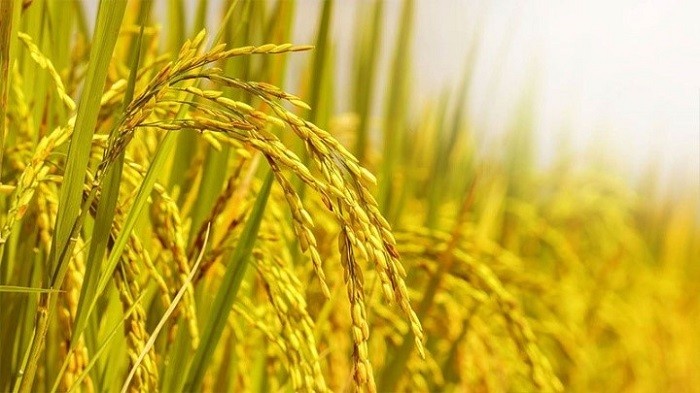No products in the cart.
NEWS
Growing Greener Rice: How Sustainable Farming Reduces Methane and Increases Profit
For a long time, global attention on agriculture’s environmental impact has focused heavily on livestock farming, particularly its contribution to greenhouse gas emissions. Scientists have dedicated significant effort to reducing emissions from this sector. However, it’s less widely known that rice cultivation stands as the second-largest agricultural source of these heat-trapping gases. Just like livestock, rice paddies release substantial amounts of methane, a gas far more potent than CO2 in warming the atmosphere.
The Methane Challenge in Traditional Rice Farming
The traditional approach to growing rice often involves keeping fields flooded continuously. Farmers adopt this method primarily to suppress weeds and prevent pest infestations, which is effective in protecting the crop and maximizing nutrient availability in the soil. However, this constant flooding creates an anaerobic (oxygen-deprived) environment in the soil. Under these conditions, specific types of microorganisms thrive, breaking down organic matter and releasing methane as a byproduct.
With rice serving as a staple food for over 3.5 billion people and a crucial economic commodity for many nations, simply halting rice cultivation is not a viable option. The global demand for rice continues to rise. Instead, the focus is shifting towards developing and implementing innovative farming methods that significantly reduce these emissions while maintaining or even improving productivity.
Introducing Alternate Wetting and Drying (AWD): A Sustainable Solution
One promising technique that has emerged from agricultural research is called Alternate Wetting and Drying (AWD). This method represents a significant departure from continuous flooding. With AWD, rice fields are initially flooded, but the water is then allowed to drain or evaporate, letting the soil dry out completely before being re-watered. This cycle of wetting and drying is repeated throughout the growing season.
 Expansive green rice paddy field illustrating the landscape of rice cultivation and the potential for sustainable water management.
Expansive green rice paddy field illustrating the landscape of rice cultivation and the potential for sustainable water management.
Agricultural experts explain that allowing the field to dry periodically disrupts the anaerobic conditions necessary for methane-producing microbes to flourish. When oxygen enters the soil during the dry phase, methane production is significantly curtailed.
The Remarkable Benefits of Switching to AWD
Studies and field implementations have demonstrated multiple advantages of adopting the AWD method in rice farming:
Significant Reduction in Methane Emissions
Research indicates that AWD can reduce methane emissions by as much as 50% compared to continuous flooding. Practical applications in various regions have shown reductions in the range of 35% to 50%, making it a powerful tool in the fight against climate change within the agricultural sector.
Saving Precious Water Resources
Rice cultivation is notoriously water-intensive, accounting for over a third of the world’s total irrigation water. AWD dramatically decreases the amount of water needed. Field data suggests water savings can be around 20% or even more by avoiding continuous saturation. This is critical in regions facing water scarcity and contributes to more sustainable water management practices.
Boosting Rice Growth and Yield
Counterintuitively, the drying phase in AWD benefits the rice plants themselves. When the soil dries, rice roots are encouraged to grow deeper and stronger in search of water. When the field is re-watered, these robust root systems support vigorous plant growth, often leading to higher yields compared to traditionally flooded fields.
Improving Farmer Profitability
The combined effects of reduced water usage (saving on irrigation costs), potentially less need for certain chemicals (as AWD can help manage some pests and diseases differently), and increased yields can translate into significant financial benefits for farmers. Reports from regions implementing AWD have shown increases in farmer income, sometimes by as much as 30%, demonstrating that sustainable practices can indeed be profitable. As Dr. Anya Sharma, a leading agronomist specializing in water-efficient crops, often says, “AWD proves that environmental responsibility and economic success in agriculture aren’t mutually exclusive; they can be mutually reinforcing.”
Practical Considerations for Implementing AWD
Transitioning to AWD requires careful water management. Farmers need to monitor water levels to determine when to dry and re-flood. Simple tools, like a perforated pipe inserted into the soil, can help check the water level below the surface. Initial adjustments to other practices, like nutrient application or weed management, might be needed, but the long-term benefits in terms of environmental impact, water saving, and yield are compelling.
Conclusion
The challenges of methane emissions and high water consumption in traditional rice farming are significant, but innovative solutions like Alternate Wetting and Drying (AWD) offer a bright path forward. By adopting AWD, farmers can play a crucial role in climate action, conserve vital water resources, enhance the health and yield of their crops, and ultimately improve their livelihoods. Embracing sustainable rice farming is a critical step towards a more resilient and environmentally friendly global food system. At Biogarden.asia, we are committed to supporting farmers in adopting sustainable techniques with our range of products designed to optimize soil health and plant resilience, helping cultivate not just crops, but a better future. We encourage you to explore these methods and share your experiences with sustainable farming.



